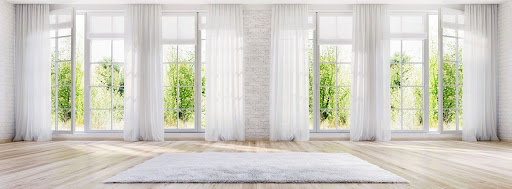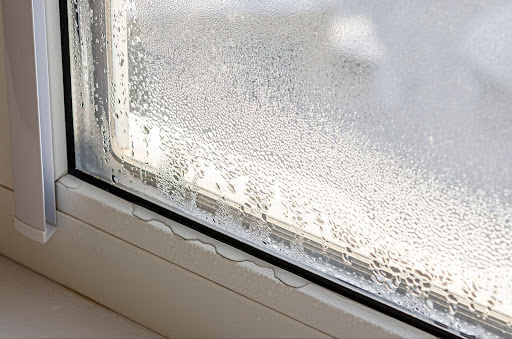Mold prevention is crucial for maintaining the structural integrity of your home and safeguarding the health of its inhabitants. Mold growth, often due to poor air quality and excess moisture, leads to various health issues, including allergies and respiratory problems. Mold also causes damage to your home.
One of the most effective ways to combat mold is through proper ventilation. Good ventilation helps regulate indoor humidity levels and improves overall air quality, creating an environment less conducive to mold growth.
In this blog, we will explore the role of ventilation in mold prevention, delve into the science of how ventilation impacts air quality, and provide practical tips for enhancing ventilation in your home. We will also discuss when to seek professional help for ventilation and mold issues.
Mold and its causes
Mold is a type of fungus that thrives in moist environments and can spread rapidly in the right conditions. Mold causes various health problems, particularly for those with allergies or asthma. Mold spores, always present in the air, can settle and grow on almost any surface with excess moisture and poor air quality.
The most common causes of mold in homes are related to moisture issues. Moisture issues include anything from high humidity levels to water leaks and condensation. Areas like bathrooms, basements, and kitchens are particularly prone to mold due to their higher moisture levels. Poor air quality exacerbates the problem — inadequate ventilation traps moist air inside and provides the perfect breeding ground for mold.
Effective mold prevention requires managing both moisture levels and air quality in your home. By understanding the conditions mold needs to grow, you can take proactive steps to create an environment where mold is less likely to become a problem. Keeping your home dry and well-ventilated is crucial in preventing mold growth and maintaining a healthy living space.
The science of ventilation and air quality
Ventilation is pivotal in maintaining indoor air quality and critical to mold prevention. The science behind it is straightforward: proper ventilation helps reduce indoor pollutants, control humidity, and prevent mold growth by replacing stale indoor air with fresh outdoor air.
Impact on indoor pollutants
Various pollutants, including dust, chemical fumes, and mold spores, often laden the indoor air. Without adequate ventilation, these pollutants accumulate, degrading air quality and potentially causing health issues. Ventilation dilutes these indoor pollutants by bringing in cleaner outdoor air, thereby improving the overall air quality within your home.
Controlling humidity
Humidity control is another crucial aspect of ventilation. Mold thrives in moist environments, and indoor high humidity levels create the perfect mold growth conditions.
Effective ventilation helps regulate these humidity levels. By allowing moist indoor air to escape and drier outdoor air to take its place, ventilation reduces the overall moisture content in your home. Striking a balance is essential, as overly dry and overly moist air cause problems; the former may lead to respiratory discomfort, while the latter encourages mold growth.
Preventing mold growth
The relationship between ventilation, humidity, and mold prevention is interlinked. By ensuring a steady exchange of indoor and outdoor air, ventilation systems help keep humidity levels in check, thus preventing the damp conditions that mold requires to flourish. This is particularly important in areas like bathrooms and kitchens, where moisture levels are naturally higher.
Understanding the science of ventilation and its impact on air quality is fundamental to mold prevention. Good ventilation improves the air you breathe and helps maintain a mold-free environment. Ensuring proper air circulation and humidity control reduces the risk of mold growth in your home.

Practical tips for improving home ventilation
Enhancing the ventilation in your home is one strategy for mold prevention. Proper ventilation ensures a continuous flow of air, which helps to regulate humidity levels and reduce the likelihood of mold growth. Here are some practical tips to improve ventilation in your home:
Open windows and doors
Create a cross breeze by opening windows and doors when weather permits. This cross breeze circulates fresh air through your home, reduces moisture, and dilutes indoor air pollutants.
Install trickle vents
Trickle vents, installed in window frames, allow fresh air to enter even when windows are closed, promoting continuous air circulation.
Exhaust fans
Install exhaust fans, especially in high-moisture areas like bathrooms and kitchens. These fans expel humid air directly outside, preventing moisture accumulation.
Ceiling and standing fans
Use ceiling and standing fans to improve air circulation throughout your home. They help in evenly distributing air and reducing pockets of stagnant air.
Air conditioning
Air conditioners not only cool the air but also reduce humidity. Ensure your air conditioning system is regularly maintained, and the filters are clean for optimal performance.
Monitor humidity
Use a hygrometer to monitor indoor humidity levels. Aim to keep humidity between 30-50% to prevent mold growth.
Dehumidifiers
In areas with persistently high humidity levels, use dehumidifiers to remove excess moisture from the air.
Indoor plants
Some indoor plants improve air quality and absorb excess moisture in the air. However, avoid overwatering plants as this could contribute to higher humidity.
By implementing these strategies, you improve the ventilation in your home, creating a healthier environment and effectively preventing mold growth. Remember, good ventilation is about more than air movement; it’s about ensuring the air in your home is fresh, clean, and at the right humidity level.
Signs of poor ventilation
Identifying poor ventilation in your home is crucial for taking timely action to improve air quality and prevent mold. Here are a few signs of inadequate ventilation:
Persistent musty odors
A continuous musty or stale smell is sometimes a sign of poor ventilation. This odor may indicate that moisture is not adequately removed from the air.
Condensation on windows
Excessive condensation on the inside of windows suggests high humidity levels, often due to inadequate air exchange.
Mold and mildew growth
Visible mold or mildew, particularly in bathrooms, kitchens, and basements, indicates high moisture levels and poor ventilation.
Allergic reactions or respiratory issues
If occupants experience worsening allergies or respiratory problems at home, it could be due to poor air quality from insufficient ventilation or mold growth.

Health risks associated with poor air quality and mold
Here are some of the health risks for people who live in homes with poor air quality and mold:
- Respiratory problems: Prolonged exposure to mold and poor air quality leads to respiratory issues, including asthma, allergies, and other breathing difficulties.
- Weakened immune system: Constant exposure to mold and poor indoor air weakens the immune system, making individuals more susceptible to other illnesses.
- Long-term health effects: In some cases, chronic exposure to mold and poor air quality can lead to more serious long-term health issues.
Recognizing these signs and understanding the risks associated with poor ventilation and mold exposure are essential for maintaining a healthy living environment. Improving ventilation enhances air quality and plays a significant role in mold prevention, contributing to the overall well-being of the home’s occupants.
When to seek professional help
While there are many steps you can take to improve ventilation and prevent mold in your home, there are situations where professional intervention is necessary. Understanding when to seek this help is crucial in effectively addressing ventilation and mold issues.
Persistent mold problems
If you notice recurring mold growth despite your efforts to improve ventilation and reduce humidity, it’s time to consult a professional. This persistent mold could indicate deeper issues that require expert attention.
Health symptoms
If household members experience ongoing respiratory problems or allergic reactions, a professional assessment of your home’s air quality and ventilation system is a good idea.
Major renovations
If you’re planning significant home renovations, consult with a professional to ensure that your new or updated space has adequate ventilation to prevent future mold problems.
Services offered by professionals
Professionals help protect your home from mold in a few different ways:
Mold assessment
Professional mold assessment involves a thorough inspection of your home to identify mold sources and areas at risk. Experts use specialized tools to detect hidden mold and provide recommendations for remediation.
Air quality testing
Professionals can test the air quality in your home to identify pollutants, allergens, and other harmful particles. This testing helps you and the professional team understand the factors contributing to poor air quality and mold growth.
Advanced ventilation solutions
Professionals can advise on and install advanced ventilation systems tailored to your home’s specific needs. These systems range from enhanced HVAC units with filtration systems to heat recovery ventilators (HRVs) and energy recovery ventilators (ERVs).
Professional solutions for ventilation and mold issues address the immediate problem and contribute to the long-term health and safety of your home environment. Experts in mold prevention, ventilation, and air quality have the knowledge and tools to ensure your home remains safe and healthy.
Restore your home with Utah Disaster Clean Up & Restoration
Maintaining good ventilation is essential for mold prevention and ensuring healthy air quality in your home. Addressing ventilation issues mitigates mold risks and contributes to the overall well-being of your living environment.
Professional assessment and solutions are invaluable for persistent mold and air quality challenges. If you’re facing such issues, don’t hesitate to contact Utah Disaster Clean Up & Restoration. Our team of experts specializes in mold removal and air quality solutions, ensuring your home is safe, healthy, and comfortable. Contact us today for professional assistance in restoring and protecting your home.



